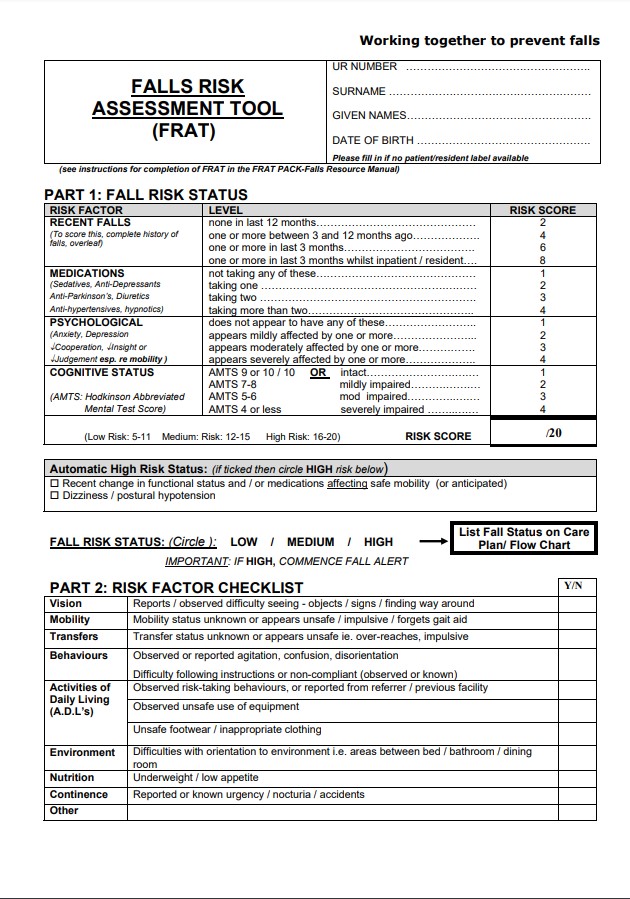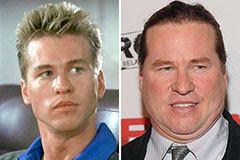The Ultimate Guide To Dementia Fall Risk
Table of ContentsGetting My Dementia Fall Risk To WorkHow Dementia Fall Risk can Save You Time, Stress, and Money.All About Dementia Fall RiskDementia Fall Risk Can Be Fun For Anyone
A loss risk analysis checks to see just how likely it is that you will fall. The analysis generally includes: This includes a series of questions about your general health and wellness and if you have actually had previous drops or problems with balance, standing, and/or walking.STEADI consists of testing, examining, and treatment. Treatments are recommendations that might minimize your risk of dropping. STEADI consists of 3 steps: you for your danger of succumbing to your risk elements that can be boosted to try to avoid drops (as an example, balance issues, impaired vision) to minimize your threat of dropping by utilizing effective techniques (for instance, supplying education and learning and sources), you may be asked numerous questions including: Have you fallen in the past year? Do you feel unsteady when standing or walking? Are you bothered with falling?, your provider will examine your strength, balance, and gait, making use of the adhering to autumn evaluation tools: This examination checks your stride.
After that you'll take a seat once again. Your service provider will certainly inspect the length of time it takes you to do this. If it takes you 12 seconds or even more, it may mean you go to higher risk for an autumn. This examination checks toughness and equilibrium. You'll rest in a chair with your arms went across over your breast.
The positions will obtain more challenging as you go. Stand with your feet side-by-side. Move one foot midway forward, so the instep is touching the huge toe of your various other foot. Relocate one foot fully in front of the various other, so the toes are touching the heel of your various other foot.
Unknown Facts About Dementia Fall Risk
A lot of drops take place as an outcome of several adding aspects; for that reason, taking care of the danger of dropping begins with recognizing the elements that add to fall danger - Dementia Fall Risk. A few of one of the most relevant threat variables include: History of previous fallsChronic clinical conditionsAcute illnessImpaired gait and balance, lower extremity weaknessCognitive impairmentChanges in visionCertain high-risk medications and polypharmacyEnvironmental variables can also increase the risk for drops, consisting of: Inadequate lightingUneven or damaged flooringWet or unsafe floorsMissing or harmed hand rails and get hold of barsDamaged or improperly fitted devices, such as beds, mobility devices, or walkersImproper use assistive devicesInadequate supervision of individuals living in the NF, consisting of those who exhibit aggressive behaviorsA successful autumn risk management program needs a detailed professional evaluation, with input from all participants of the interdisciplinary team

The treatment plan need to likewise include treatments that are system-based, such as those that promote a secure atmosphere (suitable lights, handrails, order bars, and so on). The efficiency of the treatments must be assessed periodically, and the treatment plan changed as required to reflect adjustments in the autumn risk analysis. Implementing a loss threat management system making use of evidence-based best practice can reduce the occurrence of drops in the NF, while limiting the capacity for fall-related injuries.
The Facts About Dementia Fall Risk Uncovered
The AGS/BGS standard recommends screening all adults matured 65 years and older for loss risk every year. This screening contains asking patients whether they have dropped 2 or even more discover this info here times in the previous year or sought clinical attention for a fall, or, if they have not fallen, whether they feel unsteady when walking.
Individuals that have dropped once without injury must have their balance and stride evaluated; those with gait or equilibrium problems ought to obtain added evaluation. A background of 1 loss without injury and without stride or balance issues does not require more evaluation past ongoing annual autumn danger screening. Dementia Fall Risk. A loss risk analysis is required as component of the Welcome to Medicare assessment

The Best Strategy To Use For Dementia Fall Risk
Recording a falls background is just one of the top quality indications for loss prevention and management. An essential component of threat evaluation is a medication testimonial. A number of courses of drugs raise autumn threat (Table 2). Psychoactive medicines particularly are independent forecasters of falls. These medications often tend to be sedating, modify the sensorium, and impair equilibrium and gait.
Postural hypotension can commonly be minimized by lowering the dose of blood pressurelowering medications and/or quiting medications that have orthostatic hypotension as a side effect. Use above-the-knee assistance hose and resting with the head of the bed elevated might also lower postural reductions in blood learn this here now stress. The preferred elements of a fall-focused physical exam are displayed in Box 1.

A yank time higher than or equal to 12 seconds recommends high fall risk. The 30-Second Chair Stand test analyzes lower extremity toughness and balance. Being not able to stand from a chair of knee elevation without using one's arms shows raised fall threat. The 4-Stage Balance examination examines static balance by having the person stand in 4 settings, each considerably a lot more difficult.
 Val Kilmer Then & Now!
Val Kilmer Then & Now! Kenan Thompson Then & Now!
Kenan Thompson Then & Now! Marla Sokoloff Then & Now!
Marla Sokoloff Then & Now! Danica McKellar Then & Now!
Danica McKellar Then & Now! Matilda Ledger Then & Now!
Matilda Ledger Then & Now!